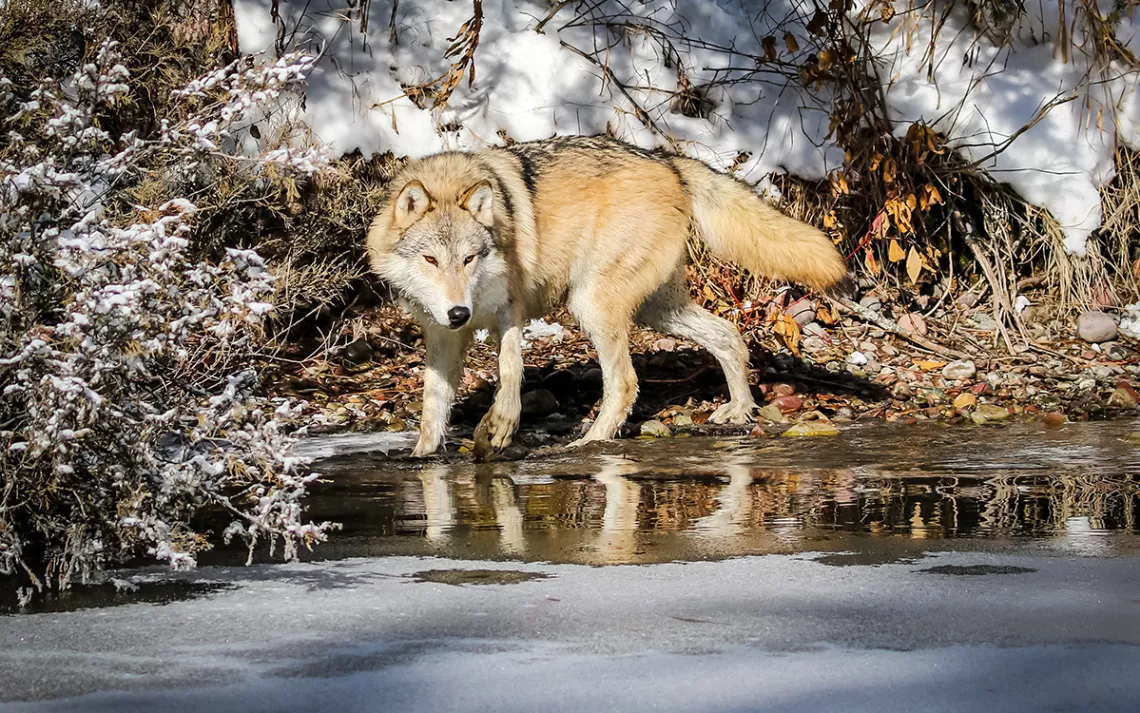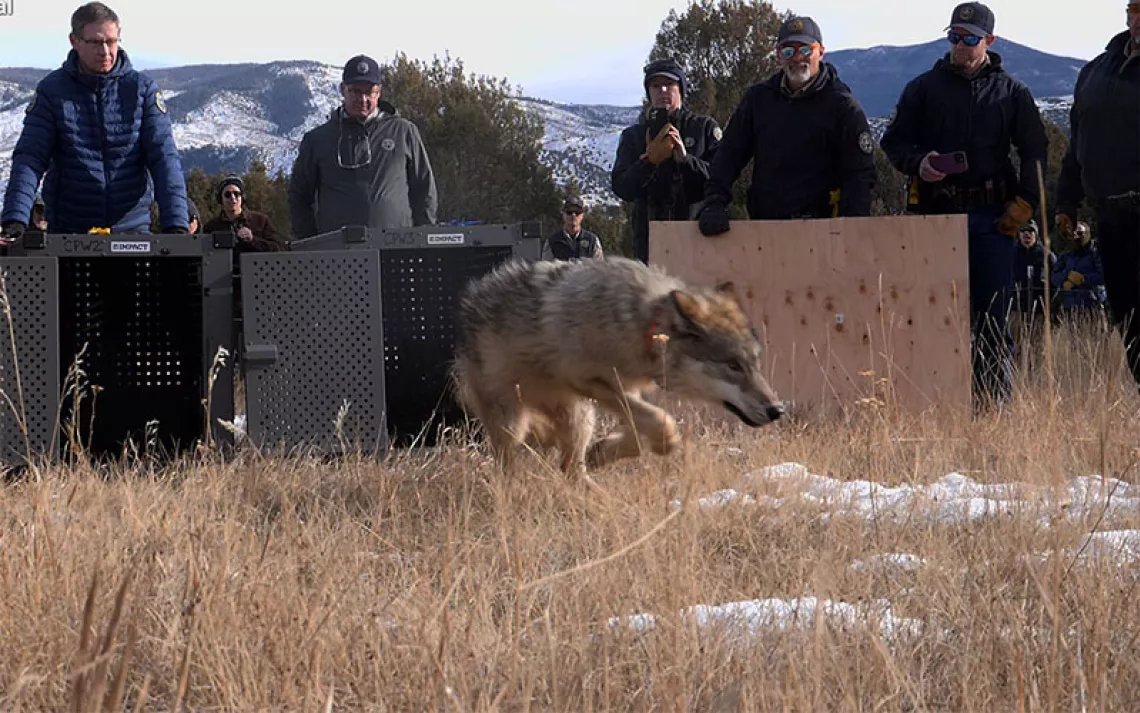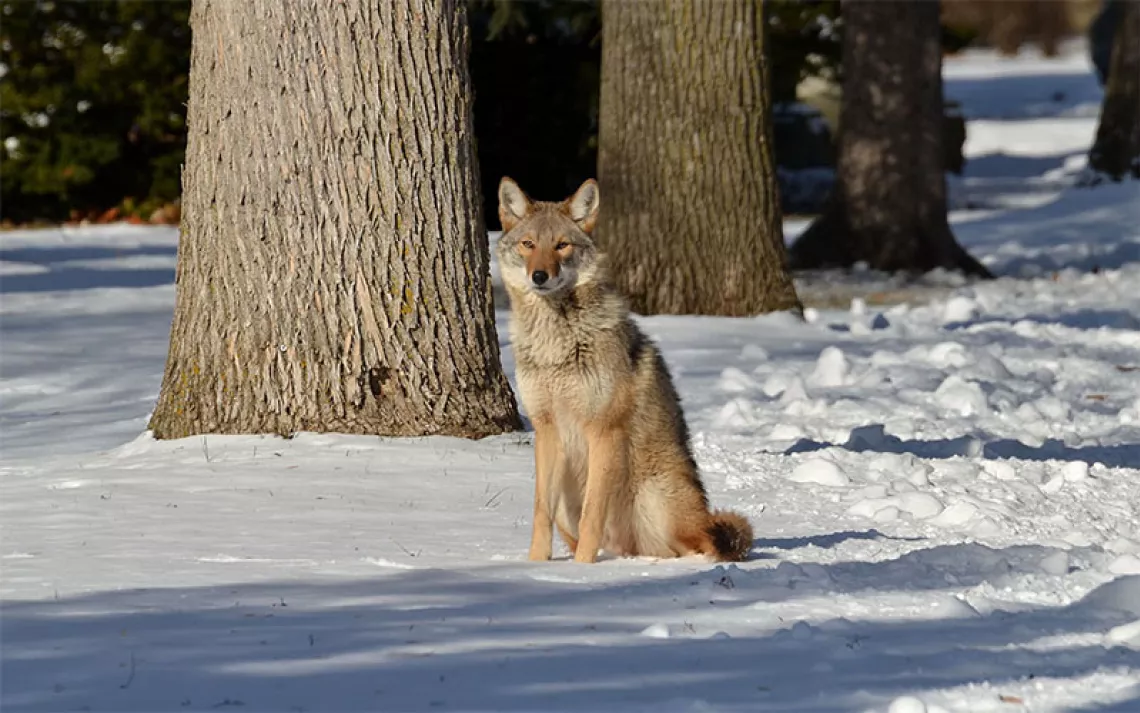Montana Launches a War on Wolves
Hunting pregnant females and chokehold snares already signed into law

Photo by Holly Cannon/iStock
Montana governor Greg Gianforte has just signed the most brutal wildlife laws in a century. More are on the way. Some await his signature, while others are still going through the legislative process: eight proposals that target wolves, grizzly bears, and black bears. They would, among much else, remove limits on how many wolves can be killed, extend hunting into the breeding season, and increase the ways in which predators can be hunted, including baiting and blinding.
An array of advocacy organizations, lawmakers, and conservation groups ranging from the Sierra Club to Wolves of the Rockies have condemned the bills as inhumane and unscientific. “This has just become an all-out anti-predator fervor,” says Nick Gevock, conservation director for the Montana Wildlife Federation, a hunting and conservation organization. “It's unjustified scientifically and it's unjustified socially.”
The bills are a legislative wish list that anti-predator groups have unsuccessfully tried to pass in the past. With Gianforte’s election in November 2020, however, Republicans control all three branches of state government and are able to push through partisan legislation with ease. Gianforte is an avid supporter of hunting causes. In 2016, he gave $10,000 to the Montana Trappers Association, a group advocating for most of the current proposals, to defeat a law that would have banned trapping on public land. This March, he illegally trapped a radio-collared wolf on a private ranch outside of Yellowstone National Park without taking the required certification course. Montana Fish Wildlife and Parks (FWP) let him off with a warning.
What's in the bills?
As of this writing, Gianforte has signed two bills, both sponsored by state representative Paul Fielder of Thompson Falls. HB 224 would allow trappers to use chokehold snares that strangle wolves (or any other passing animal). HB 225 would allow the Montana FWP to extend the trapping season by 30 days, starting two weeks earlier and ending two weeks later. This would extend well into the breeding season, which means hunters will likely kill many pregnant female wolves.
Anti-predator bills awaiting the governor’s signature include SB 267 by state senator Bob Brown, the most extreme in the current legislative session. One of its provisions would effectively bring back wolf bounties, which are currently illegal in the state. Brown gets around this by having the state reimburse expenses incurred in the hunt, rather than for producing a dead body. Opponents, like Senator Pat Flowers, argue this is merely “bounty hunting by another name.”
Records from Idaho Fish and Game show that agency board members who manage a similar bounty program in that state paid themselves with public funds. With the Montana version, the authors have pivoted to a completely private funding source, the same nonprofit that leads Idaho's bounty program. Conservation groups condemned the revelation and expressed worries about attempts to bring the program to Montana.
“It’s ethically questionable for a nonprofit organization to be paying out its primary program funds to its own staff and board,” said Derek Goldman, Northern Rockies Field Representative for the Endangered Species Coalition. “It seems self-serving when leaders of an organization that administers a wolf bounty program—which includes public funds—are also recipients of those funds. It’s very concerning that they are seeking to establish a similar bounty program here in Montana.”
Brown's other bill, SB 314, is aiming at reducing the wolf population to no fewer than 15 breeding pairs. The most recent publicly available data says that there are 1,100 to 1,200 wolves in the state. This means that more than 90 percent of the wolf population could be killed if this bill becomes law. Hunters would also be allowed to kill an unlimited number of wolves with a single hunting license, to use bait as an attractant, and to hunt on private land with night lights, which temporarily blind unsuspecting animals.
Fielder is also targeting black bears: HB 468 would bring back the use of dogs to hunt them, and HB 367 is a constitutional referendum that would enshrine hunting and trapping in Montana’s constitution. As a referendum, it needs to pass the Senate by a two-thirds majority, which would require the vote of at least three Democrats.
Two more bills specifically target grizzly bear recovery. Sponsored by Senator Bruce Gillespie, SJ 18 would request that Congress delist grizzly bears in much the same way it delisted the wolf. Gillespie’s second bill, SB 98, would allow people to kill grizzlies if they threaten livestock.
“Already under Montana law, if you catch a grizzly bear in the act of killing livestock, you can kill it,” says Gevock. “This new law says we can kill a bear threatening livestock. Well, what is the definition of threatening?”
Bad for Wildlife, Bad for Hunting
Sponsors of anti-predator laws often cite their supposed competition with human hunters for elk and deer, but this isn’t backed by the data. Most estimates put Montana’s elk population at around 150,000, which is 40,000 more than before wolves were reintroduced. The state has also met its elk quotas in most management areas, adds Goldman.
Also, Montana already has an annual wolf hunt. Since 2011, Montana’s has been recognized as one of the more measured hunts, at least when compared with its neighboring states. In the three most recent hunts for which reports are available (2015 to 2017), the state reached a quota of over 200 wolves each year, a mortality that scientists say populations can sustain.
The aggressive push for laws not backed by science is a disappointing departure for a state previously known for a reasoned approach to predator management, says Gevock. “It's really sad to see because Montana has long been deeply respected in wildlife conservation circles, and I think this is really going to tar our image,” Gevock told Sierra. “We support fair chase hunting. But there are some ethical lines that we will not cross.”
 The Magazine of The Sierra Club
The Magazine of The Sierra Club



